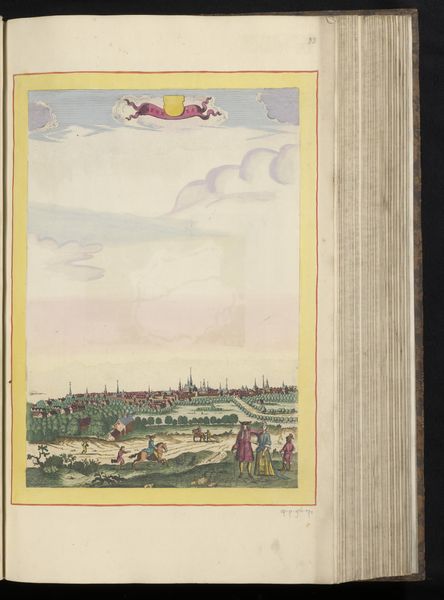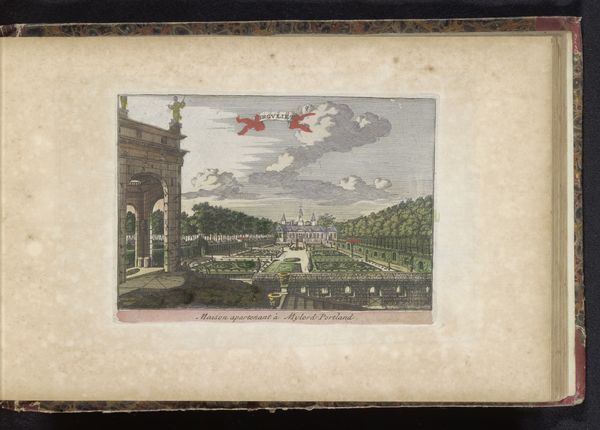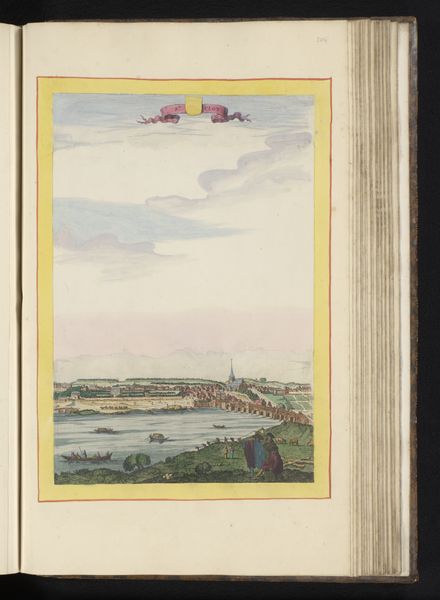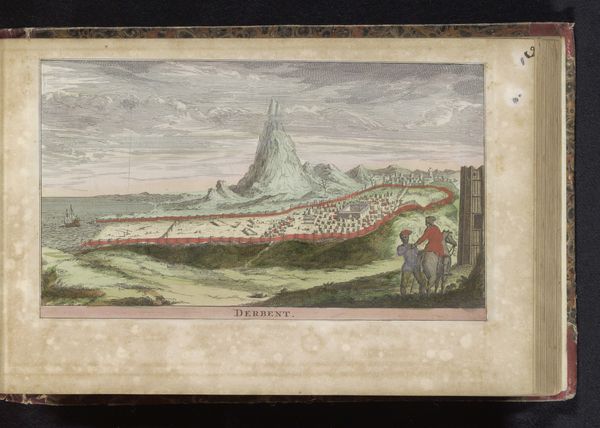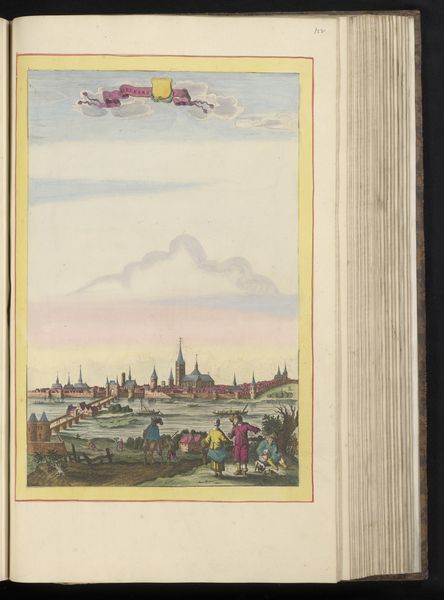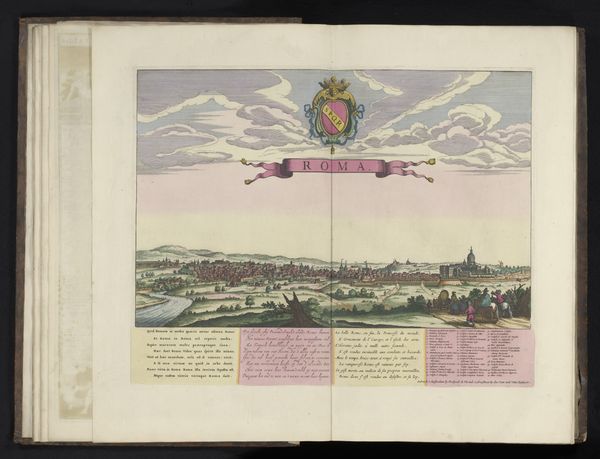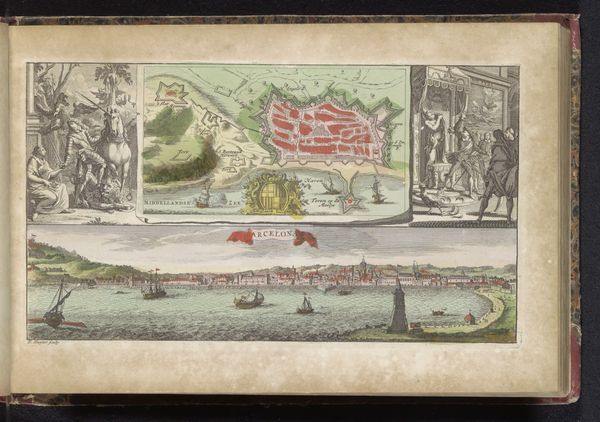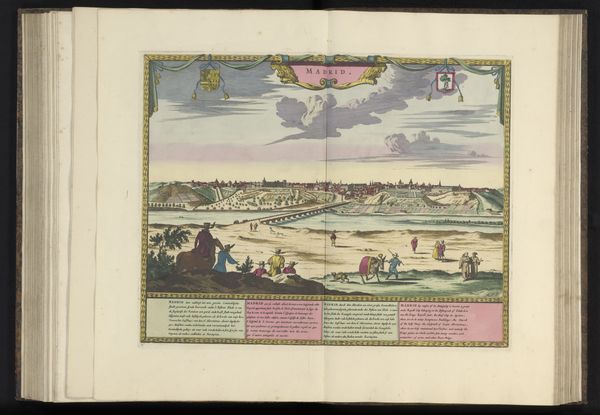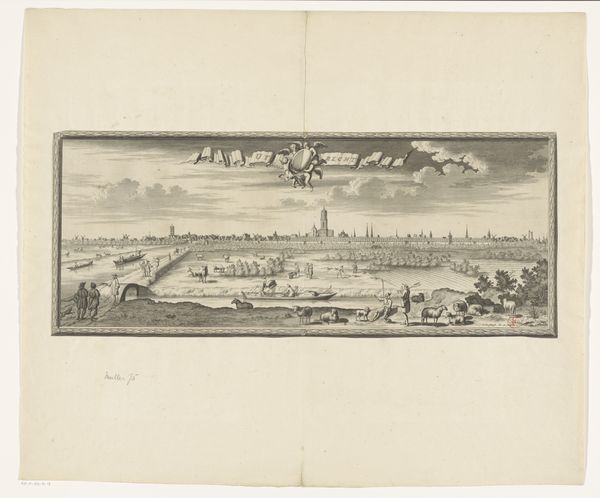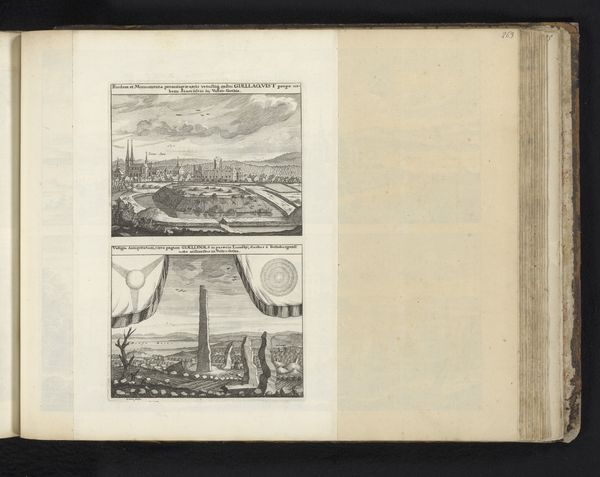
painting, print, watercolor
#
baroque
#
painting
# print
#
landscape
#
watercolor
#
coloured pencil
#
cityscape
#
mixed media
Dimensions: height 139 mm, width 118 mm
Copyright: Rijks Museum: Open Domain
Curator: Let's consider this 1735 cityscape, titled "Gezicht op Warschau," believed to be made with a mixed media approach that marries printmaking with watercolor techniques. What catches your eye initially? Editor: I'm immediately drawn to the overall tone—a kind of melancholic serenity. The delicate washes of color give it an almost dreamlike quality, but there's also something stark in the detailed rendering of the city itself, especially juxtaposed with that mythological figure up above. Curator: Absolutely. The angel figure feels indicative of its historical context, when the symbolic representation of divine oversight was intertwined with civic identity. Angels are not only a key part of Christian iconography, but here it is likely that they carry ideological weight connected to the state. Editor: That angel is a pretty obvious display of power, wouldn’t you say? Almost propagandistic. But what really strikes me is how they managed to capture light with such basic materials. Looking closer, you can see the subtle ways the washes interact with the inked lines, almost mimicking atmospheric perspective. Curator: Exactly, this piece provides a valuable look into Baroque approaches, illustrating Warsaw in the 18th century, inviting us to reflect on power dynamics inherent in its visual representation. The landscape itself communicates ideals. Consider the elevated viewpoint—it signifies dominance, possession. It projects an intended visual narrative. Editor: That’s true. There's also the fact that it’s a print, made for wider circulation. The choice of a reproducible medium suggests a desire to disseminate that particular vision of Warsaw across a broad audience. The work provides some insight into the technologies used at the time. Curator: And it invites us to consider its consumption. Who had access to this image? What socioeconomic class? Editor: Thinking about the mixed-media aspect again, it makes me consider how those particular materials may or may not have been accessible and affordable in the period. Curator: True. This type of artifact allows us to contemplate intersectional histories that concern both those depicted within and those consuming it. Editor: Agreed. This piece certainly gets you thinking about power structures, materials and modes of consumption that go beyond the simple pretty picture.
Comments
No comments
Be the first to comment and join the conversation on the ultimate creative platform.
